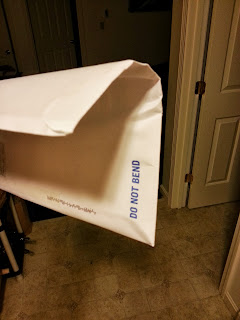No TV week? Keep calm and read #FOAM!
 Have
you just started at a service that doesn't have cable? Did your
service rip the carpet out from under the feet of Abby
and Gibbs?
Don't know where to go without DiNozzo? Is your service trying to
shield you from the Illuminati grasp on cable media? Well here's
some advise for you. Keep Calm and read FOAM.
Have
you just started at a service that doesn't have cable? Did your
service rip the carpet out from under the feet of Abby
and Gibbs?
Don't know where to go without DiNozzo? Is your service trying to
shield you from the Illuminati grasp on cable media? Well here's
some advise for you. Keep Calm and read FOAM.But what is FOAM?
Well
it's Free
Open Access Meducation says
the amazing folks over at Life
in the Fastlane.
It's a fantastic tool to learn, teach, and grow as a person who
providers medical care. It isn't just residents or doctors who use
it. Nurses, respiratory therapist, medical assistants, paramedics,
and ALL Allied health providers can benefit. FOAM has been
facilitating collaboration across the world. In my little services we
find it hard to talk to our neighbors, much less work with people in
other countries. With social media connecting people
on opposite sides
of the world, it amazing to see development happening. So how do
you access it?
That's the fun part!
How do I join?
You're already a part of the #FOAM community if you want to be! So here are the tools used by most.- Twitter: Twitter is an excellent tool to share links, articles, and small comments. It's rather limiting with 140 characters and use may be frowned upon by your service while on shift.
- Google+:
- The EMCrit community is strong there! as are many other very smart people. You're service should have any problem. 1) It's Google. 2) none of your friends use it.
- I've also been involved with a EMS based community called Quality Box Time with a medic (he runs the Facebook version, I hope G+ is more popular!) for FOAM relevant to EMS/Prehospital providers.
- FOAMcc is an excellent community! Moderated by Chris Nickson, John Greenwood, Minh Le Cong and Scott Weingart. It has a fairly comprehensive affiliate list. I am slowly getting into more and more of this list as time goes on.
- Finally!
Go look at EMCrits
Favorites,
you don't have to take it from me!
Does it need a card to be educational?
The
overwhelming answer to this is no. Unfortunately most of our
educational budgets are consumed by keeping people competent. So it
lands with the individual providers to learn more. Yes, that means
you. The good news is you aren't alone, everyone else can use to
learn more. Every day I learn something new that changes what I was
taught before. I was told that we can not differentiate between a MI
and a LBBB. Well we can with Sgarbossa
Criteria,
"A
total score of ≥ 3 has a specificity of 90% for diagnosing
myocardial infarction."
(1,2), Go check out LITFL for more on that.
So
who wants to have a four hour refresher on ACLS with information from
2010? FYI, the "Proven fact" that cooling our patients to
33°c
has mortality benefit was debunked in 2013(3,4). I do not, but I
must, because I need to keep a current card. I've learned the
information and at this point, "refreshing" dosages
and algorithms
seems like something I could do more easily while sitting around base
on my own or with coworkers as a full simulation. Without TV being a
major barrier to get by I would hope people would be more then
willing to "play".
As good medical professionals we are responsible for keeping ourselves up to date and well trained. With the excellent resources presented to us as FOAM it is very hard to cling to ignorance any longer! Hopefully this will spur a movement make learning a daily adventure and not an annual or monthly drag.References:
- Sgarbossa Criteria. Mike Cadogan. Life in the Fastlane
- Sgarbossa, E. B., Pinski, S. L., Barbagelata, A., Underwood, D. A., Gates, K. B., Topol, E. J., … Wagner, G. S. (1996). Electrocardiographic diagnosis of evolving acute myocardial infarction in the presence of left bundle-branch block. GUSTO-1 (Global Utilization of Streptokinase and Tissue Plasminogen Activator for Occluded Coronary Arteries) Investigators. The New England Journal of Medicine, 334(8), 481–7. doi:10.1056/NEJM199602223340801
- Kim F, Nichol G, Maynard C, et al. Effect of Prehospital Induction of Mild Hypothermia on Survival and Neurological Status Among Adults With Cardiac Arrest: A Randomized Clinical Trial. JAMA. 2014;311(1):45-52. doi:10.1001/jama.2013.282173.
- Nielsen N,Wetterslev J, Cronberg T, et al. Targeted Temperature Management at 33°C versus 36°C after Cardiac Arrest. N Engl J Med 2013; 369:2197-2206December 5, 2013DOI: 10.1056/NEJMoa1310519

Comments
Post a Comment